Category: NYC History
Off the Hook
I joined up for a walk through Red Hook — the peninsula edged by Buttermilk Channel (which separates Brooklyn from Governors Island), Gowanus Bay and the Gowanus Canal at the southern edge of Downtown Brooklyn. The event was sponsored by TAWNY — that’s Take a Walk, New York! — the Neighborhood Open Space Coalition and the Bette Midler-founded New York Restoration Project.
The advertised “light-hearted prowl” — part stroll, part history lesson — began bright and early this sunny morning at the Smith/9th Street station; at 91 feet, it’s the highest elevated stop in the subway system, owing to an antiquated regulation to allow for tall-mast shipping beneath the rails. Good thing for all those clipper ships that sail through Gowanus Creek… (pause)… not!
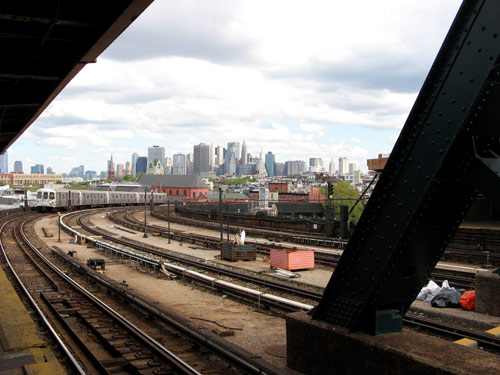
Red Hook native Dave Lutz brought our group — at over two dozen strong, a surprising turnout for 10:00 AM on a Sunday morning — through cobblestoned, residential and industrial streets, past “waterfront” parks… from which the public is blocked access to the waterfront.
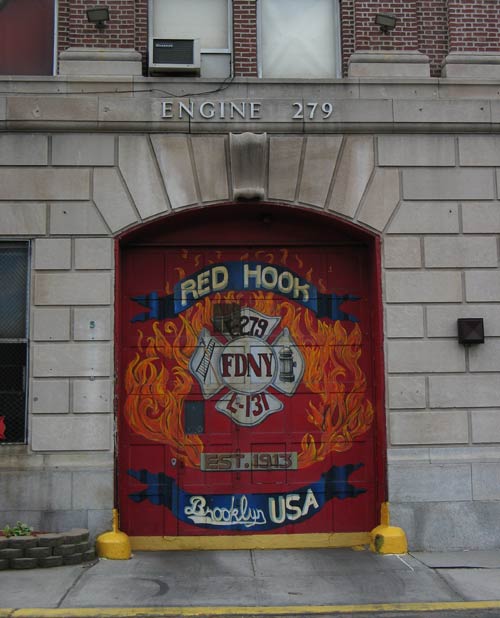
On through the Red Hook Houses, one of the largest public housing projects in the country, first built as a Federal Works Program initiative under FDR. Quite a lot has changed in the area over the past several years, but old perceptions die hard; at one point, one of the walk participants muttered that we should have brought bulletproof vests, earning himself a prompt chiding from our local walk leader.
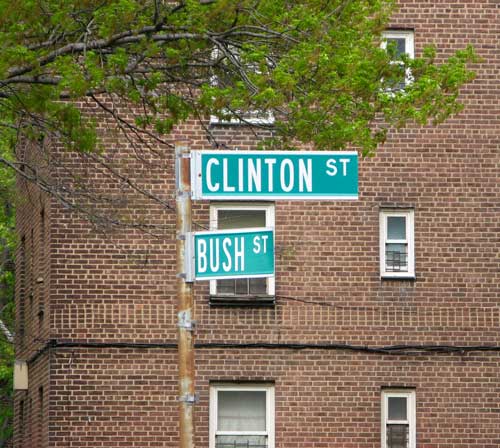
We stopped in at the Red Hook Commmunity Farm and the Sol Goldman Pool (still closed for the season) which opened in 1936, as one of the 11 WPA-funded pools opened under Mayor Fiorello H. Laguardia and Parks Commissioner Robert Moses. Last summer, photographs of the then-named “Red Hook Pool” were included in an exhibit on the city’s public pools at Central Park’s Arsenal Gallery.
Which reminds me that there are still a couple more weeks to check out the exhibitions on Moses (whose Gowanus Expressway cut off Red Hook from Brooklyn proper in 1946) at the Queens Museum and the Museum of the City of New York.
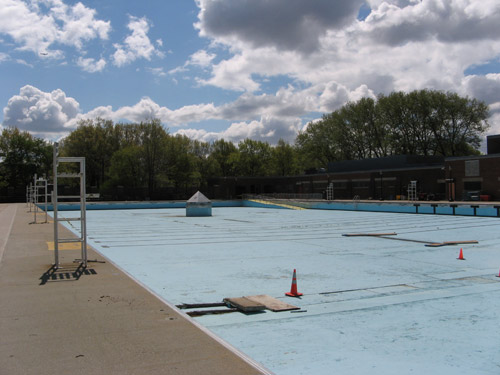
I’d read so much about the variety and quality of food available from the stalls surrounding the Red Hook ball fields that I could hardly believe that I finally made it to this foodie paradise. Unfortunately, my stomach couldn’t quite handle the tacos, enchiladas, huaraches, pupusas, ceviche and grilled corn at this early hour, so I was relegated to just taking in the sights and smells. This time.
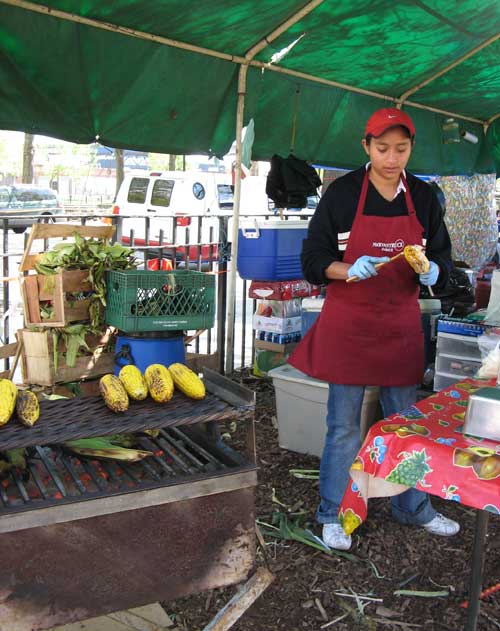
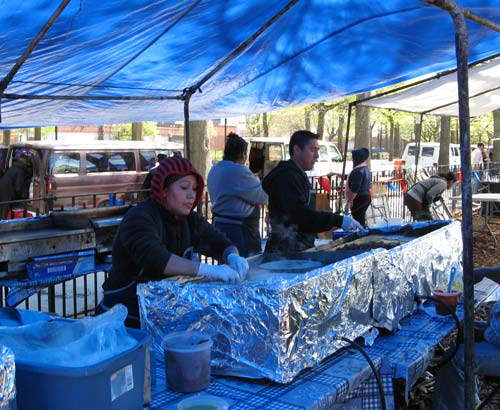
We were brought past the historic shipyard, before which Lutz briefly mounted his soapbox to deliver his unvarnished views on the negative impact a big (blue) box retailer, and accompanying vehicular traffic, would have on this neighborhood with no direct subway access.
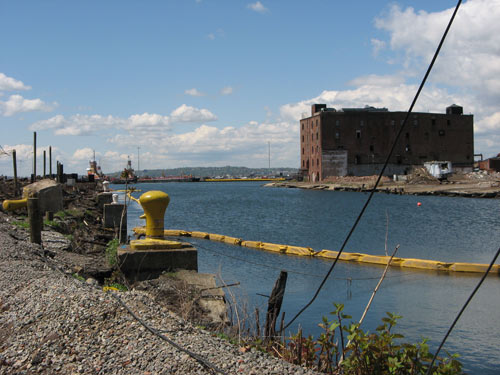
The Grand Tour
Thunder, thunder, thunder, thundercats!
Justin Ferate, an urban storyteller, historian and a former director of continuing education at The Cooper Union, hosts weekly tours of Midtown Manhattan, with a focus on its crowning jewel: Grand Central Terminal. Ferate is one of the city’s most popular and dynamic tour guides; he was selected by the NYC Department of Consumer Affairs to create the licensing examination for prospective city tour guides. The test comprises 150 questions on everything from knowledge of landmarks, history, and public points of interest, to lore, literature, ethnic foods, religious sites and city transportation routes.
This afternoon I joined a group of a couple dozen, mostly tourists, across the street from Grand Central at the Whitney Museum of American Art at Altria. In the airy sculpture court, Ferate held forth entertainingly about Old New York: on Edith Wharton, the Vanderbilts, and the spirited rivalry between the Waldorfs and the Astors. We made our way onto sunny Park Avenue where the stories continued under the gaze of the Hercules, Minerva and Mercury, surrounding the thirteen foot Tiffany glass clock.
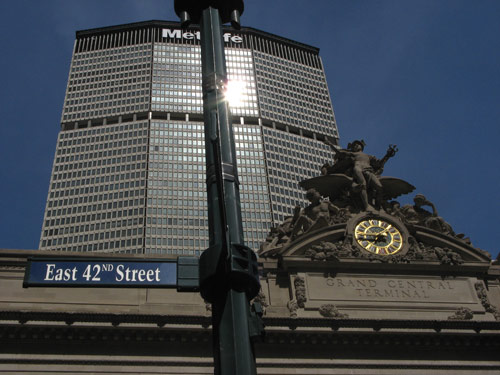
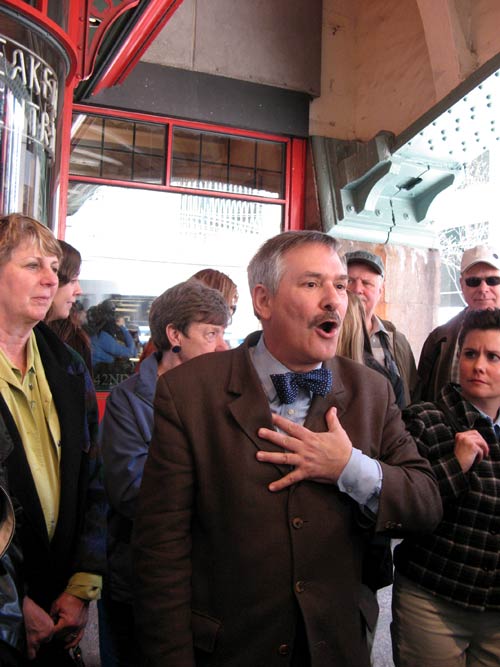
First off: as the onetime principal origin and terminus for transcontinental railroads, the name of the building is Grand Central Terminal. Grand Central Station is the name of the nearby post office and the East Side IRT stop.
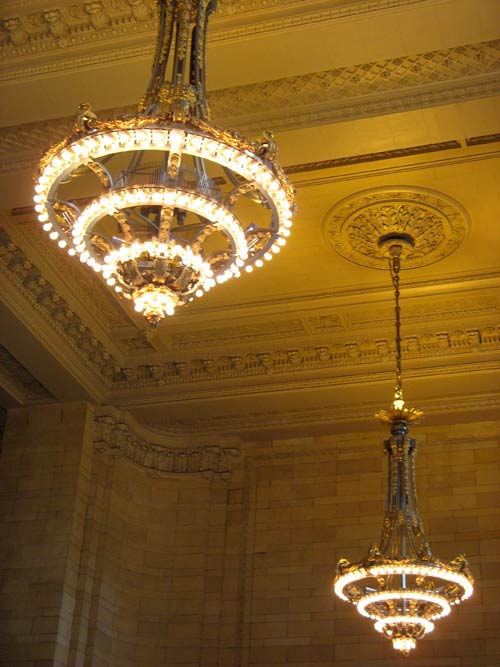
Over the next two and a half hours, Ferate guided and interacted with the group through the building, highlighting several aspects of the Beaux Arts architecture and the 12-year, $160 million LaSalle Partners and Williams Jackson Ewing restoration of the terminal. Besides expanding the retail space and creating the gourmet food market, the renovation included the cleaning of the Main Concourse’s ceiling mural. In 1998, Grand Central unveiled the original sky ceiling, painted in 1912 by French artist Paul César Helleu.
For decades, the gilded constellations were obscured by what had been thought to be smoke soot generated by the trains sitting in the terminal. Spectroscopic analysis, however, revealed that the coating was actually tar and nicotine residue, generated by the cigars and cigarettes of the half-million commuters passing through the concourse daily — much like the Tiffany-style glass dome at the Carlton Hotel.
Renovators left a single rectangular patch of the ceiling untouched — half on the blue, half on the white — to remind visitors of the grime that once coated the entire ceiling, and of the immense work involved in restoring the mural to its current condition.
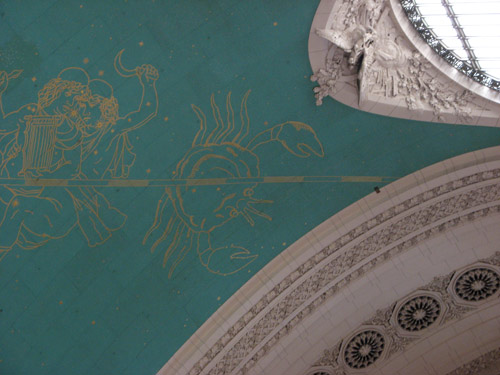
Ferate’s energy and enthusiasm were infectious. He brought the group through the food court, where he waxed on about the New York classic black and white cookie (claiming that the best in the city is to be had at century-old Glaser’s Bakery on the Upper East Side), and in front of Junior’s glass cases, what makes a true New York cheesecake. (No graham cracker crust. And fruit glaze is for tourists.) We finished our tour at the Guastavino tiles of the whispering gallery.
Check out Ferate’s site for information on more of his entertaining tours around the city. Not just for tourists: in this month alone, you can explore neighborhoods from “Literary Brooklyn Heights” to “Historic! Romantic! Seductive! Staten Island!”
Breathing uneasy
Back at the castle-like Jefferson Market Branch of the New York Public Library for a book club discussion of Noxious New York: The Racial Politics of Urban Health and Environmental Justice.
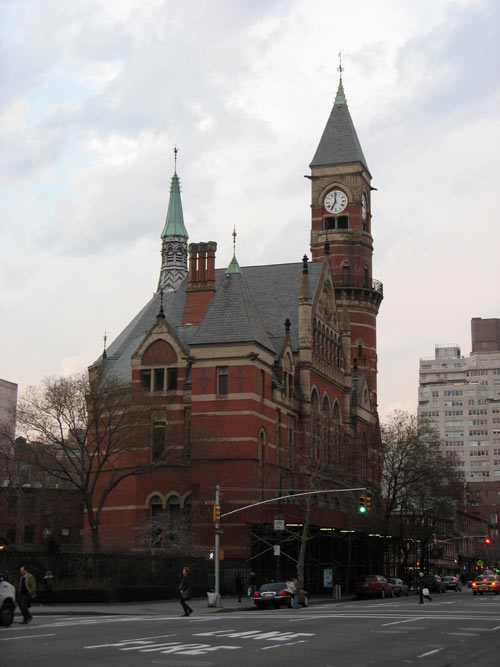
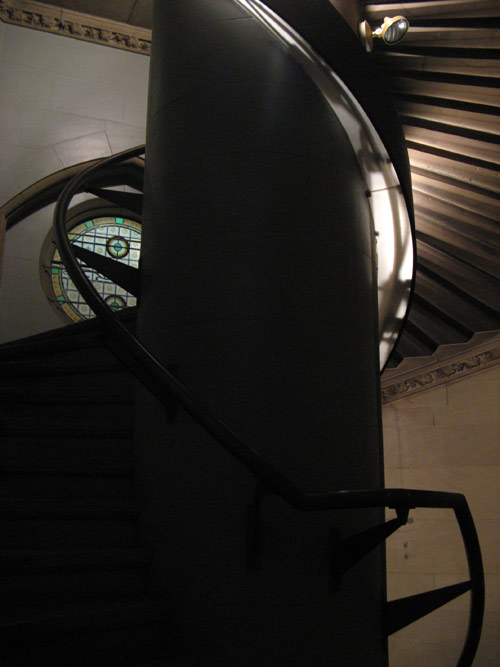
Julie Sze’s book studies how racial minority and low-income communities often disproportionately suffer the adverse effects of urban environmental problems. The Environmental Justice Movement, rooted in both the civil rights and environmental movements, endeavors to bring and sustain environmental quality to these neighborhoods, which often lack the political clout to effect change on their own.
Cecil Corbin-Mark, the first and current Program Director of the West Harlem Environmental Action (WE ACT) led the talk. In addition to his work with WE ACT, Corbin-Mark is an active board member of a number of environmental justice, parks and planning organizations. WE ACT is dedicated to protecting environmental quality, improving environmental health and combatting “environmental racism.” The organization was founded in March 1988 to address ongoing community struggles around the poor management of the North River Sewer (or “Wastewater”) Treatment Plant and the Manhattanville Bus Depot in Harlem.
According to WE ACT, the 7.5 mile area that comprises Harlem is densely populated by half a million residents, yet carries a disproportionate number of the city’s environmental burdens. Above 96th Street (which shares what’s known as an “air corridor” with the South Bronx), there are six of the seven bus depots in Manhattan, the city’s largest sewage treatment plant, and miles of truck-trafficked expressways. Each of these sites is a source of diesel fuel combustion; the toxic emissions are a known health hazard: possibly carcinogenic, according to a 2002 Environmental Protection Agency report, and an asthma irritant.
The diesel particulates have long contributed to increased rates of respiratory illness among neighborhood children, degrading the public health and quality of life in that area. According to Corbin-Mark, Harlem is in the midst of an asthma epidemic; a study conducted in 2003 cited that one in four children in central Harlem has tested positive for asthma — four times the national average of one in sixteen children. The air pollution has also been linked to lower birth weights in Upper Manhattan and South Bronx.
Author Sze, who received her doctorate in American Studies from NYU’s Graduate School of Arts and Science, will talk about her new book at the school on Wednesday evening April 11 in an event co-presented by Transportation Alternatives and UPROSE.
The Jefferson Market Garden, to the south of the library:
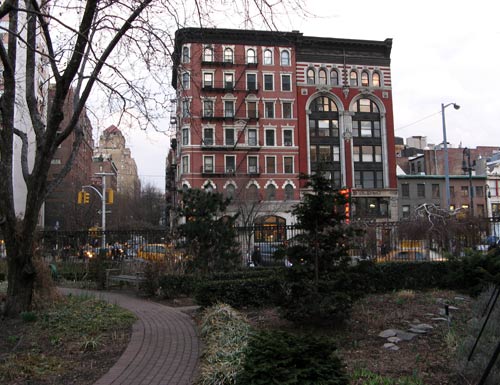
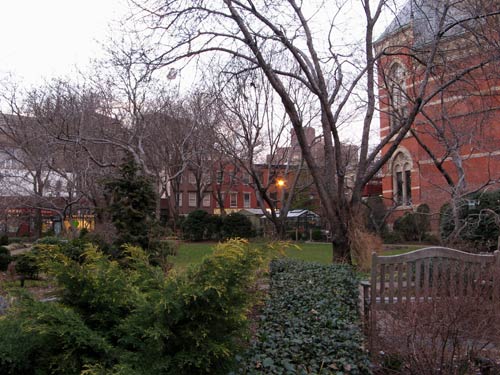
| S | M | T | W | T | F | S |
|---|---|---|---|---|---|---|
| 1 | 2 | 3 | 4 | |||
| 5 | 6 | 7 | 8 | 9 | 10 | 11 |
| 12 | 13 | 14 | 15 | 16 | 17 | 18 |
| 19 | 20 | 21 | 22 | 23 | 24 | 25 |
| 26 | 27 | 28 | 29 | 30 | 31 | |
Search
Popular Tags
Categories
Archive
- July 2010
- July 2009
- January 2009
- November 2008
- September 2008
- August 2008
- July 2008
- June 2008
- May 2008
- April 2008
- March 2008
- February 2008
- January 2008
- December 2007
- November 2007
- October 2007
- September 2007
- August 2007
- July 2007
- June 2007
- May 2007
- April 2007
- March 2007
- February 2007
- January 2007
- December 2006
- November 2006
- October 2006
- September 2006
- August 2006
- July 2006
- June 2006